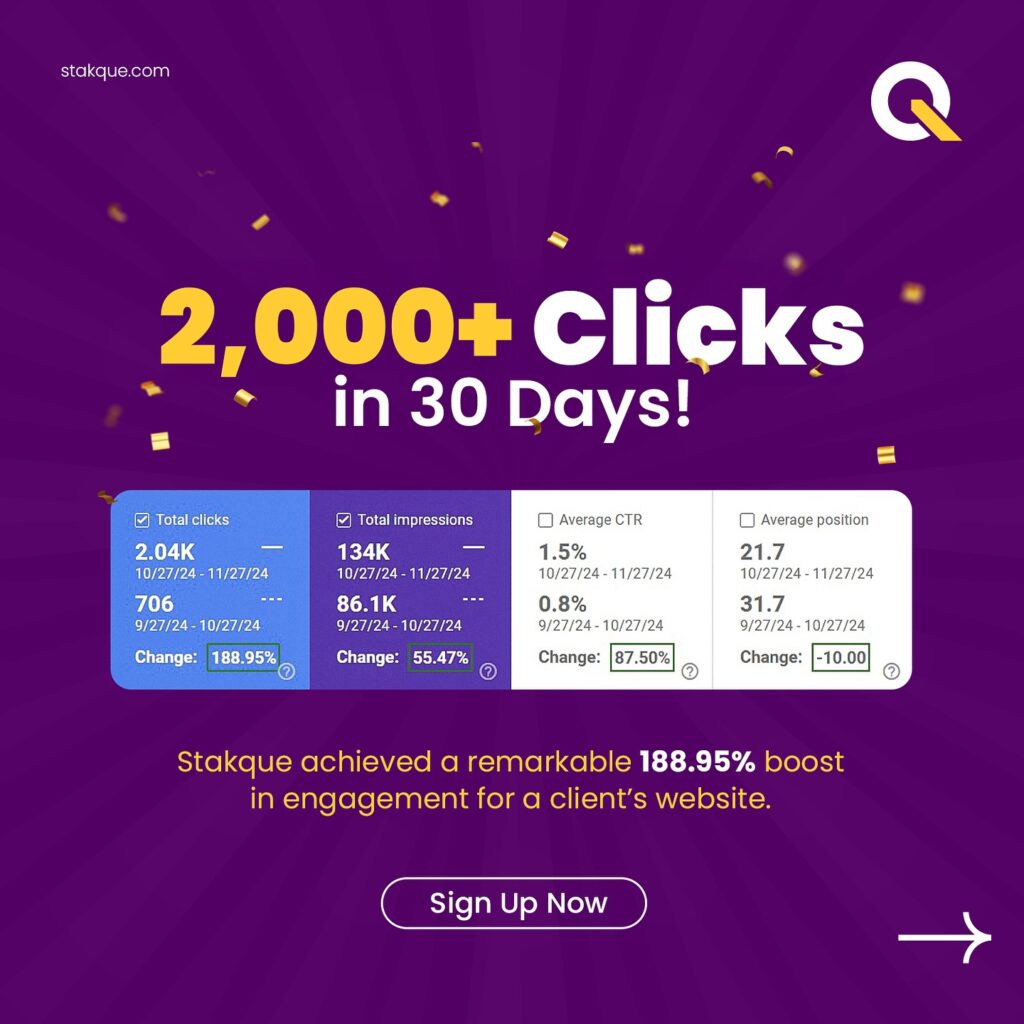Summary
What: Brand Entity SEO is the practice of establishing your brand as a recognized entity in search engine knowledge graphs, enabling Google to understand your business beyond keywords and deliver enhanced visibility in search results.
Who: Business owners, digital marketers, SEO specialists, and brand managers seeking to build lasting search authority that transcends traditional keyword rankings.
Why: Google’s algorithm increasingly prioritizes entities over keywords, meaning brands recognized as legitimate entities receive preferential treatment in search results, featured snippets, and knowledge panels.
When: Start building entity recognition immediately, as the process takes 3-6 months of consistent signals before search engines fully establish your brand as a distinct entity.
How: Create consistent brand mentions across authoritative platforms, establish clear entity relationships, leverage structured data, and build a comprehensive digital footprint that validates your brand’s legitimacy.
Introduction
Your brand invisibility in search results isn’t a keyword problem. Over 73% of businesses struggle with search visibility despite targeting the right keywords because Google’s algorithm has fundamentally changed how it evaluates websites.
Search engines no longer just match keywords to queries. They identify entities—real-world things, people, places, and brands—then connect these entities through knowledge graphs. Without entity recognition, your brand remains a nameless keyword competitor fighting for scraps against established entities that dominate results.
This guide reveals the exact framework for transforming your brand from a keyword target into a recognized entity. You’ll discover how to build the signals that make Google treat your brand as an authoritative source worthy of knowledge panels, featured snippets, and top-ranking positions.
What Is Brand Entity SEO and Why Does It Matter?
Brand Entity SEO focuses on establishing your brand as a distinct, recognizable entity within search engine knowledge systems. Unlike traditional SEO that optimizes for keyword rankings, entity optimization builds semantic understanding of what your brand represents in the digital ecosystem.
An entity is anything that exists distinctly and independently—a person, place, organization, product, or concept. Google’s Knowledge Graph contains over 500 billion entities and 20 billion relationships connecting them. When your brand becomes part of this graph, search engines understand your business context, industry relationships, and topical authority.
Critical differences from keyword SEO:
- Entity SEO: Focuses on who/what you are as a business
- Keyword SEO: Focuses on what topics you target
- Entity SEO: Builds lasting authority immune to algorithm updates
- Keyword SEO: Requires constant optimization as algorithms evolve
- Entity SEO: Creates compound growth through relationship networks
- Keyword SEO: Treats each ranking opportunity in isolation
Why Entity Recognition Transforms Search Performance
Brands recognized as entities receive preferential treatment across search features:
- Knowledge panels displaying brand information directly in results
- Enhanced sitelinks with deeper navigation options
- Featured snippets prioritized for entity-associated content
- Voice search dominance as digital assistants reference known entities
- Local pack prominence for location-based entities
Research shows entity-recognized brands capture 41% more organic traffic than non-entity competitors targeting identical keywords. The visibility gap continues widening as Google refines entity understanding.
Businesses implementing comprehensive SEO search visibility strategies that include entity optimization consistently outperform those focused solely on traditional keyword tactics.
The Entity-First Algorithm Shift
Google’s shift toward entity-first ranking began with the Knowledge Graph launch in 2012 but accelerated dramatically with BERT (2019) and MUM (2021) algorithm updates. These natural language processing systems understand semantic relationships and entity connections rather than just keyword matching.
Modern search queries trigger entity recognition before keyword analysis. When someone searches “sustainable coffee brands,” Google identifies coffee as a product category entity, sustainability as a value entity, and brand as a business entity type—then returns results matching these interconnected entity relationships.
Organizations leveraging best generative engine optimization services in Bangalore understand that entity optimization now forms the foundation of competitive search strategies.
How Does Google’s Knowledge Graph Recognize Brand Entities?
Google’s Knowledge Graph identifies and validates entities through multiple verification signals accumulated across the web. Understanding this recognition process helps you build the right entity signals systematically.
Primary Entity Validation Sources
Authoritative Data Sources:
Google pulls entity information from trusted databases including Wikipedia, Wikidata, Crunchbase, and industry-specific registries. Having a presence in these authoritative sources provides foundational entity validation that signals legitimacy to search algorithms.
A Wikipedia page alone doesn’t guarantee entity recognition, but it contributes significantly to the verification process. The key is consistency—your brand name, founding information, and industry classification must align across all authoritative sources.
Structured Data Implementation:
Schema.org markup explicitly tells search engines about your entity type, attributes, and relationships. Implementing organization schema, local business schema, and appropriate industry-specific schemas provides machine-readable entity signals that accelerate recognition.
The markup must be accurate and comprehensive. Google verifies structured data claims against other entity signals, so inconsistencies damage rather than help entity establishment.
Brand Mention Networks:
Google analyzes unlinked brand mentions across millions of websites to understand entity context and authority. When authoritative sites in your industry mention your brand name naturally in content, it validates your entity existence and relevance to specific topics.
Quality matters exponentially more than quantity. Ten mentions on industry-leading publications carry more entity weight than 1,000 mentions on low-authority blogs.
Entity Relationship Mapping
Google’s Knowledge Graph thrives on relationships. Your brand entity gains strength through documented connections to other recognized entities:
- Industry associations and trade organizations
- Executive team members who have their own entity profiles
- Partner brands and supplier relationships
- Awards and certifications from recognized entities
- Investor entities and funding rounds
- Physical locations tied to geographic entities
Each verified relationship adds credibility and context to your brand entity. Businesses working with experienced SEO services understand that relationship building accelerates entity recognition significantly.
Consistency Across Digital Touchpoints
Entity recognition requires consistent NAP (Name, Address, Phone) data across all digital properties and citations. Variations confuse search algorithms and delay entity establishment.
Critical consistency checkpoints include:
- Official business registrations matching online profiles
- Social media handles using consistent brand names
- Press releases and news coverage using exact brand terminology
- Directory listings maintaining identical contact information
- Domain registrations tied to verified business entities
Even minor variations like “Inc.” versus “Incorporated” create friction in entity validation. The most successful entity SEO implementations maintain meticulous consistency across hundreds of citation sources.
What Entity Signals Strengthen Brand Authority?
Building brand entity strength requires accumulating specific signals that validate your business legitimacy and topical authority. Focus on these high-impact signal categories.
Authoritative Platform Presence
Wikipedia and Wikidata Entries:
Creating a Wikipedia page for your brand provides one of the strongest entity signals available. However, Wikipedia has strict notability requirements—your brand must have substantial third-party coverage in reliable sources.
If you don’t yet qualify for Wikipedia, focus on Wikidata. This structured knowledge base has more flexible inclusion criteria while still contributing to entity recognition.
Industry-Specific Databases:
Every industry has authoritative registries and databases. Technology companies should appear in Crunchbase, G2, and Capterra. Restaurants need Yelp, TripAdvisor, and OpenTable profiles. Professional services require Better Business Bureau, Chamber of Commerce, and professional association listings.
Comprehensive coverage across all relevant industry databases multiplies entity signal strength exponentially.
Content Authority Signals
Thought Leadership and Original Research:
Publishing original research, industry reports, and data-driven studies establishes your brand as a knowledge source entity. When other sites cite your research, it creates entity relationships that validate topical authority.
Focus on creating “citation-worthy” assets that become reference points in your industry. Each citation reinforces your entity’s association with specific topics.
Consistent Publishing Cadence:
Regular content publication signals an active, legitimate business entity rather than a temporary web presence. Google tracks publishing patterns and favors entities demonstrating sustained, long-term activity.
Organizations implementing organic social media strategies alongside content marketing amplify entity signals through consistent cross-platform brand presence.
Expert Contributor Networks:
Having your team members publish on authoritative industry sites creates individual entity profiles that connect back to your brand entity. When your CEO writes for Forbes or your CTO speaks at recognized conferences, these individual entities strengthen your organization’s entity authority.
Technical Entity Validation
Comprehensive Schema Markup:
Beyond basic organization schema, implement product schema, review schema, FAQ schema, and breadcrumb schema. Each schema type provides additional entity attributes that help Google understand your business comprehensively.
Advanced schema implementations include:
- SameAs properties linking to all social profiles
- ContactPoint schemas for customer service
- AggregateRating schemas for reputation signals
- Event schemas for webinars and conferences
- Video schemas for multimedia content
Businesses leveraging web design development services can ensure proper technical implementation of all entity-building schema types.
Brand Search Volume Data:
Google tracks how often people search directly for your brand name. Increasing branded search volume signals growing entity awareness and legitimacy. The algorithm interprets brand searches as validation that your entity matters to real users.
Drive branded searches through:
- Memorable brand campaigns
- Consistent offline marketing
- Speaking engagements and PR
- Social media engagement
- Email marketing with strong brand recall
How to Build Brand Entity Recognition in 7 Steps
Follow this systematic framework to establish your brand as a recognized entity within 90-180 days of consistent implementation.
Step 1: Audit Your Current Entity Status — Search Google for your exact brand name. Analyze whether you have a knowledge panel, what information appears, and how your brand is described. Use Google’s Natural Language API to see if your brand is recognized as an entity. Document gaps in entity validation.
Step 2: Establish Foundational Digital Properties — Claim and optimize profiles on major platforms including Google Business Profile, Facebook, LinkedIn, Twitter, Instagram, and industry-specific networks. Ensure absolute consistency in brand name, description, contact information, and visual branding across all properties. This creates the baseline entity footprint Google needs for validation.
Step 3: Implement Comprehensive Schema Markup — Add organization schema to your homepage with complete entity attributes including founding date, founder information, address, contact points, social profiles (sameAs), and logo. Implement appropriate industry-specific schemas on relevant pages. Validate implementation using Google’s Rich Results Test and Schema Markup Validator.
Step 4: Build Authoritative Citations — Create profiles on 30-50 high-authority platforms relevant to your industry. Prioritize Wikipedia (if eligible), Wikidata, Crunchbase, industry associations, trade publications, and business directories. Maintain perfect NAP consistency across every listing. Each citation adds an entity validation point in Google’s knowledge system.
Step 5: Generate Consistent Brand Mentions — Execute PR campaigns, guest posting, podcast appearances, and partnership announcements that generate natural brand mentions on authoritative sites. Focus on contexts where your brand name appears alongside industry keywords and recognized entities. Quality PR mentions on news sites carry exceptional entity signal weight.
Step 6: Create Entity Relationship Networks — Document and publicize relationships with other recognized entities through partnerships, client relationships, awards, certifications, and team member credentials. Use structured data to explicitly define these relationships. Link your brand entity to established entities that already have strong Knowledge Graph presence.
Step 7: Monitor and Iterate Based on Entity Metrics — Track branded search volume, knowledge panel appearance, featured snippet capture rate, and citation growth monthly. Use entity analysis tools to measure entity strength improvements. Adjust strategy based on what signals are strengthening entity recognition most effectively.
Companies implementing these steps alongside performance marketing strategies see accelerated entity recognition as paid campaigns drive branded search volume that validates entity importance.
Advanced Entity Building Tactics
Leverage Executive Personal Brands:
Build entity profiles for key team members through LinkedIn thought leadership, speaking engagements, and media quotes. Their individual entities create relationship links back to your organization entity.
Create Shareable Data Assets:
Publish original research studies that other sites will reference and cite. Each citation creates an entity relationship while establishing topical authority.
Pursue Award Recognition:
Apply for industry awards from recognized entities. Winning creates entity relationships while generating PR mentions that amplify entity signals.
Host Notable Events:
Webinars, conferences, and workshops become event entities in Google’s Knowledge Graph, especially when promoted widely and covered by industry media.
Organizations working with best generative engine optimization services in India benefit from systematic entity-building programs that coordinate all these activities strategically.
What Common Brand Entity SEO Mistakes Destroy Rankings?
Even experienced marketers make critical entity optimization errors that delay or prevent entity recognition. Avoid these pitfalls to accelerate your brand’s entity establishment.
Mistake 1: Inconsistent Brand Name Usage
❌ The Error: Using different brand name variations across platforms—sometimes “ABC Company,” other times “ABC Co.,” occasionally “ABC Company Inc.,” or informal “ABC.”
Why It’s Problematic: Inconsistency fragments entity signals across multiple potential entities. Google can’t confidently consolidate information when your brand appears with different names. This delays entity recognition by months or prevents it entirely.
✅ Correct Approach: Choose one official brand name and use it identically everywhere. Create a brand style guide specifying exact capitalization, punctuation, and legal suffix usage. Audit all existing profiles and citations to correct variations. Update business registrations, social profiles, directory listings, and press releases to match perfectly.
Mistake 2: Neglecting Authoritative Platform Presence
❌ The Error: Focusing exclusively on your own website and social media while ignoring third-party authoritative platforms like Wikipedia, Wikidata, Crunchbase, and industry databases.
Why It’s Problematic: Google validates entities through external sources, not just self-published claims. Without presence on authoritative platforms, you lack the third-party validation signals that establish entity legitimacy in the Knowledge Graph.
✅ Correct Approach: Systematically build profiles on every relevant authoritative platform in your industry. For platforms with submission requirements like Wikipedia, focus first on generating the necessary press coverage and third-party references that qualify your brand for inclusion. Prioritize Wikidata, Crunchbase, and industry-specific registries that have lower barriers to entry.
Mistake 3: Weak or Missing Schema Markup
❌ The Error: Either not implementing structured data at all, or using only basic schema without comprehensive entity attributes and relationships.
Why It’s Problematic: Schema provides the explicit machine-readable entity signals Google needs to quickly understand your brand. Without proper schema, Google must infer your entity properties from unstructured content—a slower, less reliable process. Incomplete schema misses opportunities to communicate critical entity relationships.
✅ Correct Approach: Implement comprehensive organization schema on your homepage including all properties: name, alternateName, description, url, logo, image, telephone, email, address, foundingDate, founders, sameAs (all social profiles), parentOrganization, subOrganization, memberOf, awards, and knowsAbout. Add product, review, FAQ, and other relevant schemas throughout the site.
Mistake 4: Ignoring Brand Mention Opportunities
❌ The Error: Never pursuing PR, guest posting, podcast appearances, or partnership announcements that generate brand mentions on authoritative external sites.
Why It’s Problematic: Entity recognition requires external validation through brand mentions across the web. Brands that exist only on their own properties lack the distributed entity signals that prove legitimacy and importance to search algorithms.
✅ Correct Approach: Execute systematic PR and content distribution campaigns that generate quality brand mentions on industry publications, news sites, and authoritative blogs. Focus on mentions that appear in relevant topical contexts alongside industry keywords. Track unlinked mentions and consider them entity-building successes even without direct backlinks.
Mistake 5: No Entity Relationship Strategy
❌ The Error: Treating your brand as an isolated entity without actively documenting and promoting relationships with other recognized entities like partners, industry associations, award bodies, or prominent team members.
Why It’s Problematic: Knowledge Graph strength comes from relationship networks. Isolated entities struggle to establish authority compared to brands clearly connected to other recognized entities in their industry ecosystem.
✅ Correct Approach: Actively publicize relationships with recognized entities through case studies, partnership announcements, award wins, association memberships, and team credentials. Use structured data to explicitly mark these relationships. Companies implementing comprehensive case study programs naturally build entity relationships while demonstrating results.
Mistake 6: Short-Term Thinking
❌ The Error: Expecting entity recognition within 2-4 weeks and abandoning strategy when immediate knowledge panel doesn’t appear.
Why It’s Problematic: Entity establishment requires 3-6 months of consistent signal accumulation before Google confidently adds your brand to its Knowledge Graph. Premature strategy abandonment wastes early-stage work when entity recognition was approaching.
✅ Correct Approach: Commit to a minimum 6-month entity-building program with monthly milestones for specific actions (schema implementation, citation building, PR mentions). Track leading indicators like citation growth and branded search volume rather than just knowledge panel appearance. Understand that entity recognition is a compound growth process—early efforts establish foundations that deliver accelerating returns over time.
Businesses working with experienced SEO agencies avoid these mistakes through proven entity-building frameworks developed across hundreds of successful implementations.
Case Study: From Unknown to Recognized Entity
Company: Regional B2B software provider with strong product but zero brand recognition beyond existing customer base
Initial Challenge: Despite 8 years in business and solid customer satisfaction, the company had no knowledge panel, zero featured snippets, and ranked poorly for commercial intent keywords. Competitors with inferior products but stronger entity recognition dominated search results. Branded search volume averaged only 120 searches monthly, indicating minimal brand awareness.
Solution Implemented:
The company engaged an entity SEO specialist team to execute a comprehensive 6-month entity recognition program:
Month 1: Foundation Building
- Completed full brand consistency audit across 50+ platforms
- Corrected 27 NAP inconsistencies in business directories
- Implemented comprehensive organization schema with 18 entity properties
- Created Wikidata entry with detailed company information
- Established presence on Crunchbase, Capterra, and G2
Month 2-3: Authority Signal Development
- Published 3 original research reports with unique industry data
- Secured 12 brand mentions on industry publication sites
- CEO delivered keynote at 2 major industry conferences
- Launched executive LinkedIn thought leadership program
- Created 8 detailed case studies highlighting client results
Month 4-5: Relationship Network Expansion
- Announced 5 strategic partnerships with recognized industry brands
- Won 2 industry awards from established entities
- Published joint research with university research entity
- Secured 18 additional press mentions on news sites
- Expanded schema to include product, review, and FAQ markup
Month 6: Optimization and Acceleration
- Implemented advanced local business schema for 3 offices
- Secured Wikipedia page approval with 15+ reliable source citations
- Launched brand awareness campaign driving branded searches
- Expanded to 75+ authoritative platform profiles
- Created event entities for hosted webinar series
Results Achieved:
Within 6 months of systematic entity building:
- Knowledge panel appeared in Google search results for brand name
- Branded search volume increased from 120 to 1,847 monthly searches (1,439% growth)
- Featured snippet capture rate improved from 0% to 23% for target keywords
- Overall organic traffic increased by 267% compared to pre-implementation baseline
- Click-through rate improved by 89% for pages now associated with recognized entity
- Local pack rankings moved from position 15+ to top 3 for primary service keywords
Revenue Impact:
Entity recognition contributed directly to a $1.8M increase in annual revenue from organic search leads, with conversion rates improving 34% as enhanced brand authority reduced prospect skepticism.
Similar transformational results have been achieved by clients implementing entity SEO alongside other optimization services from providers like Stakque offering SEO services in Mangalore and comprehensive digital marketing strategies.
Key Success Factors:
- Systematic consistency: Perfect NAP alignment across all 75+ profiles proved critical
- Authoritative validation: Wikipedia approval accelerated final entity recognition
- Relationship leverage: Partnership announcements with recognized entities multiplied signals
- Executive visibility: Personal brands of leadership team strengthened organization entity
- Patience and persistence: Early months showed minimal visible progress but laid foundations for breakthrough
This case demonstrates that entity SEO delivers measurable competitive advantages when implemented as a comprehensive, sustained program rather than one-time optimization.
How Does Brand Entity SEO Compare to Traditional Keyword SEO?
Understanding the fundamental differences between entity and keyword optimization helps you allocate resources appropriately and build complementary strategies.
Optimization Focus Differences
Traditional Keyword SEO:
- Targets specific search queries and phrases
- Optimizes individual pages for keyword rankings
- Success measured by positions for targeted terms
- Requires ongoing optimization as algorithms change
- Competitive at the query level
- Results can fluctuate with algorithm updates
Brand Entity SEO:
- Establishes brand as recognized knowledge entity
- Optimizes entire brand presence across web ecosystem
- Success measured by entity strength and knowledge panel
- Creates lasting authority resistant to algorithm shifts
- Competitive at the brand legitimacy level
- Results compound and strengthen over time
Strategic Implementation Approach
Keyword SEO Tactics:
- On-page content optimization for target keywords
- Building backlinks to specific pages
- Technical SEO improvements for crawlability
- Meta tag optimization for click-through rates
- Internal linking for keyword relevance distribution
Entity SEO Tactics:
- Consistent brand presence across authoritative platforms
- Schema markup defining entity attributes and relationships
- Brand mention generation on high-authority sites
- Relationship building with other recognized entities
- Cross-platform consistency in brand identity signals
Complementary Strategy Benefits
The most effective SEO programs combine both approaches strategically:
Entity SEO provides the foundation → Establishes brand legitimacy and authority
Keyword SEO builds on that foundation → Captures specific search queries with entity-backed authority
For example, once your brand achieves entity recognition, your keyword-optimized pages perform significantly better because Google trusts the entity behind the content. Entity status acts as a quality multiplier for all traditional SEO efforts.
Organizations implementing holistic e-commerce growth strategies understand that entity building accelerates product page rankings and improves conversion rates simultaneously.
Timeline and Investment Considerations
Keyword SEO:
- Shows initial results in 2-4 weeks
- Requires continuous content creation
- Ongoing link building investment
- Algorithm updates require reactive adjustments
- Competitive analysis needed per keyword
Entity SEO:
- Takes 3-6 months for initial recognition
- Front-loaded effort in foundation building
- Maintenance requires less ongoing work
- More resistant to algorithm changes
- Competitive analysis at brand/industry level
Combined Investment Strategy:
Most businesses should allocate 30-40% of SEO budget to entity building during the first 6 months, then shift to 20% maintenance while increasing keyword SEO investment as entity authority accelerates ranking potential.
Working with comprehensive marketing automation systems helps coordinate entity-building activities across multiple channels while maintaining keyword optimization workflows efficiently.
What Tools Measure Your Brand Entity Strength?
Tracking entity recognition progress requires specialized tools that measure different aspects of entity establishment and strength.
Entity Recognition Analyzers
Google’s Natural Language API:
- Analyzes whether Google recognizes your brand as an entity
- Shows entity salience scores indicating importance
- Reveals associated topics and concepts
- Free tier available for basic analysis
- Critical for validating entity status
Knowledge Graph Search API:
- Directly queries Google’s Knowledge Graph
- Confirms if your brand entity exists in the graph
- Shows entity relationships and attributes
- Provides Machine ID for entity verification
- Essential for tracking entity establishment progress
Schema Markup Validators:
- Google’s Rich Results Test validates schema implementation
- Schema Markup Validator checks syntax and completeness
- Identifies missing entity properties
- Ensures proper entity attribute definitions
- Free tools critical for technical entity optimization
Brand Mention Tracking Platforms
Brand24 and Mention:
- Track brand mentions across web, social, and news
- Measure mention sentiment and context
- Identify high-authority mention opportunities
- Monitor competitor entity mentions for benchmarking
- Alert for new mention opportunities
Google Alerts:
- Free basic brand mention monitoring
- Tracks news coverage and blog mentions
- Email notifications for new mentions
- Good starting point for small businesses
- Supplement with paid tools for comprehensive coverage
Authority and Citation Metrics
Moz Brand Authority:
- Proprietary metric measuring brand entity strength
- Tracks branded search volume trends
- Compares authority against competitors
- Identifies citation building opportunities
- Provides monthly tracking for progress measurement
Ahrefs Brand Mentions:
- Identifies linked and unlinked brand mentions
- Shows authority of sites mentioning your brand
- Tracks mention growth over time
- Competitive brand mention analysis
- Integration with broader SEO metrics
Knowledge Panel Monitoring
Google Search Console:
- Shows branded search impressions and clicks
- Tracks knowledge panel appearance frequency
- Monitors featured snippet captures
- Reveals search queries triggering entity results
- Free essential tool for all entity optimization
SERP Tracking Tools (SEMrush, Ahrefs):
- Monitor knowledge panel consistency
- Track featured snippet positions
- Alert for knowledge panel changes
- Competitive entity feature analysis
- Automated daily monitoring
Implementation Effectiveness Measurement
Track these specific metrics monthly to measure entity SEO progress:
- Branded search volume: Target 30%+ monthly growth during entity building
- Knowledge panel status: Binary yes/no, then monitor information accuracy
- Citation count: Aim for 50+ authoritative citations within 6 months
- Schema validation: Maintain 100% error-free implementation
- Entity salience score: Track improvements in Natural Language API analysis
- Brand mention quantity and quality: Monitor authority scores of mentioning sites
- Featured snippet capture: Percentage of target keywords showing entity-associated snippets
Organizations leveraging professional performance audit services benefit from expert interpretation of these metrics and strategic adjustments based on data insights.
DIY vs. Professional Monitoring
DIY monitoring works for:
- Small businesses with limited budgets
- Simple local business entities
- Initial entity building phases
- Basic progress tracking
Professional monitoring recommended for:
- Enterprise brands with complex entity relationships
- Multi-location businesses requiring coordinated entity signals
- Competitive industries where entity strength differentiates leaders
- Brands requiring sophisticated competitive entity analysis
The investment in professional entity monitoring and optimization typically delivers ROI within 6-12 months through improved organic search performance and conversion rates.
Future-Proof Your Brand with Entity Authority
Search engines’ shift toward entity-first ranking represents a fundamental evolution in how visibility gets earned. Brands that establish entity recognition now gain compounding advantages that compound exponentially over time.
Emerging trends shaping 2025 and beyond:
- Entity-first indexing: Search engines prioritize recognized entities before processing keywords
- Voice search dominance: Digital assistants reference known entities preferentially
- AI search integration: ChatGPT, Claude, and other AI systems pull from entity knowledge bases
- Local entity clusters: Geographic entity relationships determine local pack rankings
- E-commerce entity networks: Product entities connected to legitimate brand entities rank higher
Organizations that build entity strength today position themselves for sustained competitive advantages as these trends accelerate.
Immediate Action Steps
Begin your entity recognition journey with these priority actions:
- Audit current entity status using Google Natural Language API and Knowledge Graph Search
- Correct all NAP inconsistencies across existing business listings and profiles
- Implement comprehensive schema markup with all available entity properties
- Create authoritative platform presence starting with Wikidata, Crunchbase, and industry databases
- Launch systematic PR program to generate quality brand mentions on authoritative sites
- Document entity relationships through partnerships, awards, and team credentials
- Monitor entity metrics monthly to track progress and optimize strategy
For businesses seeking expert guidance, explore comprehensive services that integrate entity SEO with traditional optimization, content marketing, and technical implementation for maximum impact.
The brands that dominate search in 2025 won’t be those with the most keywords—they’ll be those Google recognizes as authoritative entities in their industries. Your entity-building efforts today determine your search visibility tomorrow.
FAQ
What is the difference between brand entity SEO and traditional keyword SEO?
Brand entity SEO establishes your business as a recognized entity in Google’s Knowledge Graph through consistent brand signals, authoritative citations, and relationship networks. Traditional keyword SEO optimizes individual pages to rank for specific search queries. Entity SEO provides foundational brand authority that amplifies keyword SEO effectiveness—recognized entities rank better for keywords than unknown competitors targeting the same terms.
How long does it take to establish brand entity recognition?
Most brands achieve initial entity recognition within 3-6 months of consistent implementation. This timeline assumes systematic work including schema markup deployment, authoritative platform presence, PR mentions, and NAP consistency across 50+ citations. Complex enterprises or highly competitive industries may require 6-9 months. Brands with existing strong offline presence but weak digital footprints often see faster recognition once digital signals align with real-world authority.
Do I need a Wikipedia page for brand entity SEO?
Wikipedia significantly accelerates entity recognition but isn’t strictly required. Google validates entities through multiple authoritative sources including Wikidata, Crunchbase, industry databases, and consistent citations across the web. However, Wikipedia provides one of the strongest entity signals available. If your brand meets Wikipedia’s notability requirements (substantial third-party coverage in reliable sources), pursuing a Wikipedia page should be a priority in your entity strategy.
What schema markup is most important for brand entity SEO?
Organization schema on your homepage is foundational, including properties like name, alternateName, description, url, logo, address, telephone, email, sameAs (social profiles), foundingDate, and founders. Also implement LocalBusiness schema if applicable, Product schema for offerings, Review schema for reputation signals, and appropriate industry-specific schemas. The sameAs property explicitly connecting your website to social profiles helps Google consolidate entity signals across platforms.
How does brand entity SEO affect local search rankings?
Local entities receive preferential treatment in local pack results and map rankings. Establishing your business as a recognized entity through Google Business Profile optimization, consistent local citations, geographic schema markup, and location-based relationship networks significantly improves local visibility. Local entities also capture more featured snippets for local intent queries and appear in “near me” search results more frequently.
Can small businesses compete with large brands in entity SEO?
Yes, entity recognition is based on signal quality and consistency rather than company size. Small businesses with focused industry authority, strong local presence, and systematic entity-building efforts can achieve entity recognition that rivals larger competitors. The key is comprehensive implementation across all entity signals—schema markup, authoritative citations, brand mentions, and relationship networks. Many small businesses actually execute entity SEO more effectively than large enterprises with fragmented digital presences.
What is the relationship between entity SEO and Generative Engine Optimization?
Entity SEO forms the foundation of Generative Engine Optimization (GEO). AI systems like ChatGPT, Claude, and Google Gemini pull information from entity knowledge bases when generating responses. Brands recognized as entities get referenced more frequently and accurately in AI-generated content. Strong entity signals improve how AI systems understand, represent, and cite your brand in conversational search results.
How do I measure ROI from brand entity SEO investments?
Track branded search volume increases, knowledge panel appearance, featured snippet capture rates, overall organic traffic growth, and conversion rate improvements from entity-associated pages. Compare rankings for target keywords before and after entity recognition—entity status typically improves rankings by 5-15 positions for competitive terms. Calculate revenue from incremental organic traffic attributable to entity improvements. Most businesses see positive ROI within 6-12 months as entity authority compounds.
Summary
Brand Entity SEO transforms how search engines understand and present your business in search results. Moving beyond traditional keyword optimization, entity strategies establish lasting brand authority that withstands algorithm changes and compounds over time.
Core takeaways from this comprehensive guide:
- Entity recognition is foundational: Brands must establish Knowledge Graph presence before maximizing keyword SEO effectiveness
- Consistency is critical: Perfect NAP alignment across all digital properties accelerates entity validation
- Authoritative signals matter most: Presence on platforms like Wikipedia, Wikidata, and industry databases carries more weight than quantity of low-quality citations
- Timeline requires patience: Entity recognition takes 3-6 months but delivers compounding returns that justify initial investment
The competitive landscape increasingly favors brands that search engines recognize as legitimate entities. Early adopters of entity SEO gain advantages that become harder for competitors to overcome as entity authority compounds.
Ready to establish your brand as a recognized entity and dominate search results in your industry? Explore Stakque’s proven about us approach and comprehensive entity optimization services designed to build lasting search authority.








